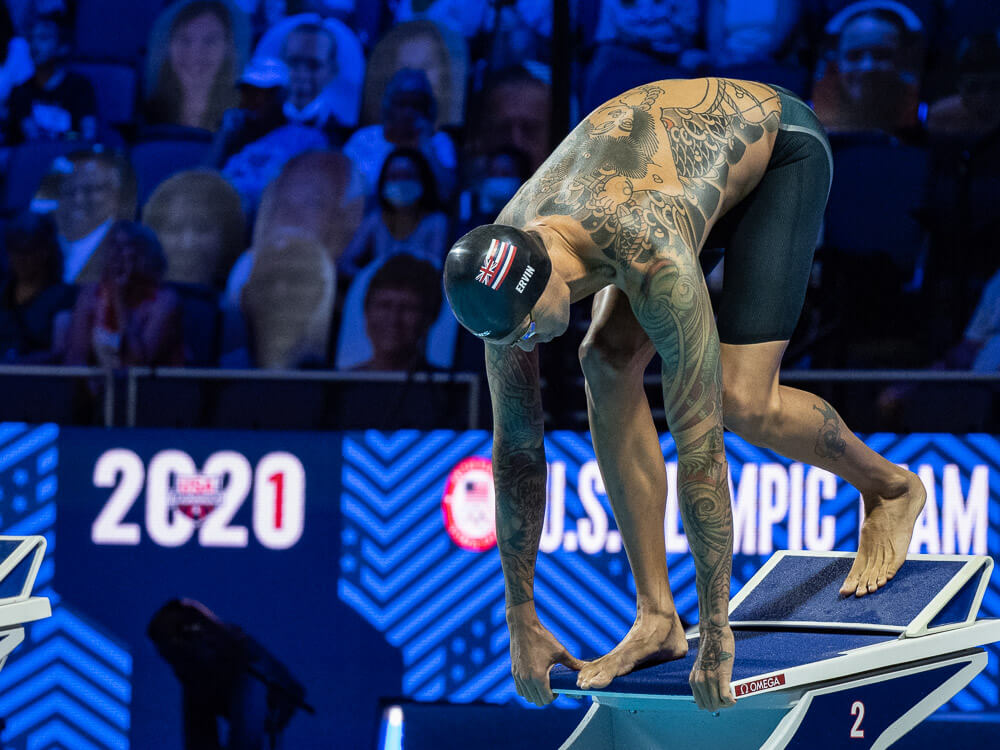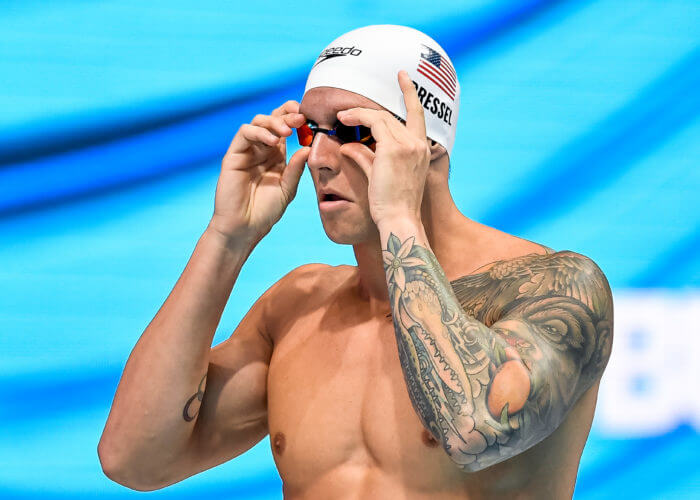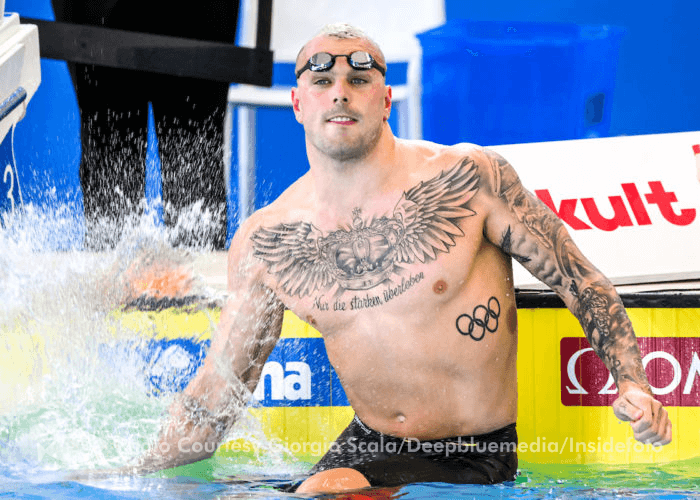Tattoos: The Art Behind Swimming and Their Wide-Ranging Meanings

Tattoos: The Art Behind Swimming and Their Wide-Ranging Meanings
Tattoos have long been an artistic way of displaying one’s personality or artistic appreciation, along with offering the chance to make connections. They also play a role in the sport of swimming, with many athletes using their bodies – engines in the water – as artistic canvases.
History of Tattooing
Tattoos are a form of art which has been around for centuries. Due to television exposure, it is most seen in sports like football or basketball where players express themselves with their tattoos based on life experiences, passions, and various other affiliations. It is becoming more noticeable among the swimming population. These athletes have the freedom to express whatever they want on their bodies, as well. No matter whether it is from an age-group swimmer to a professional swimmer, using stickers or permanent tattoos can be seen at a lot of swim meets.
Showing Off On the Blocks

Photo Courtesy: Andrea Staccioli / Deepbluemedia / Insidefoto
Self-art has been a popular tradition in sports where athletes can outwardly show how they feel. This can be considered a kind of self-branding. The most common ones in swimming are Olympic ring tattoos, college affiliations, or numerical dates that represent special events and times. Taking a closer look at these swimmers’ bodies forces you to be intrigued as to why they get themselves inked. Swimmers have the perfect bodies for branding. To show off on the blocks. Many athletes have long stories to tell if you ask them about their tattoos. Many times, it comes together in a beautiful way when you see it on their bodies.
Notable Athletes’ Tattoos
The most prevalent tattoos seen here in the U.S. are on some notable athletes. For instance, Caeleb Dressel has one of the most detailed arm sleeves with pieces representing times in his life. The gator represents his college team, and an American flag shows his country’s pride. In addition to being one of the fastest swimmers in history, Dressel has been connected with his tattoos.
Meanwhile, two-time Olympic 50-meter freestyle champion Anthony Ervin has sleeves on both arms and art on his back that stood out prominently when he stepped onto the blo

Photo Courtesy: Giorgio Scala / Deepbluemedia / Insidefoto
cks, or raised his arm in victory after a major triumph – such as his gold-medal surge at the 2016 Olympic Games in Rio de Janeiro.
Among other athletes with notable tattoos are Drew Kibler with a massive koi fish on his rib cage and superstars like Kyle Chalmers and Adam Peaty, who have showcase worthy art pieces on their bodies too. They will often describe how these pieces represent their identity as athletes and as a person.
Tattoos Create Swimming Memories
Self-art is a form of expression that is extremely important in our sport. The work logged in swimming is often unknown to those who have not experienced the pool and effort competitive swimming requires. When getting a tattoo, it takes a lot of thought, effort, and a short-lived duration of pain, but it allows swimmers to have memories that add a sense of purpose and identity. Count the Olympic rings in this category. When the athletes’ step on the blocks everyone can be reminded of what they stand for. Swimmers’ bodies are well-oiled machines, and the tattoos represent special decorative pieces.




In my humble opinion, nothing is more beautiful and gracious than a tattoo-less body
No women swimmers have tattoos?